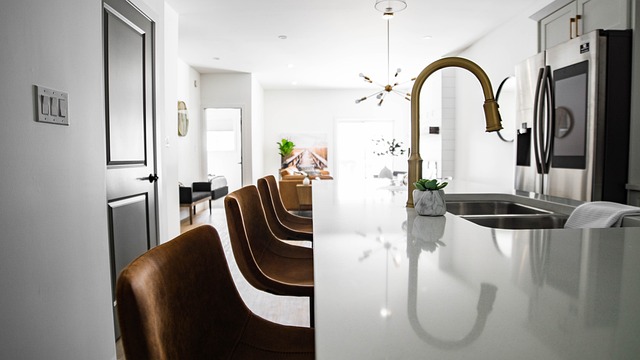Upgrade To Water-Saving Showerheads
Unlike popular belief, a shower wastes a lot more water (and energy) compared to a bath. A bathtub can only take up so much water, while a shower will continue running unless turned off, or if the user is conscious of the same. If you however prefer a shower to a bath, you might then want to consider an instant electric shower instead. The regular showerhead will only drain the hot water tank, forcing it to cycle repeatedly. Low-flow showerheads can however help solve this issue. These showerheads are designed to save water by limiting output without sacrificing efficiency. Switching to low-flow showerheads can thus see you save at least £70 and £115 per year on gas and water bills respectively. If you plan to sell your house, performing these kinds of energy savings measures, along with getting a good property photography service, is essential in ensuring a good price for your house.
Switch to LED Light Bulbs
LED bulb technology has greatly improved since its inception. Although LED light bulbs use up far more energy than other types (fluorescent, incandescent, etc…), some led bulbs are more energy efficient than others. The best thing about LED bulbs is that they offer almost similar or better brightness while using only a fraction of the energy. It is also worth noting that LED bulbs last 50X longer than halogen bulbs and use up to 90% less energy. You will thus be saving a ton in energy and bills when you make the switch.
Invest In Smart Power Strips
Power extension cables are a necessity in the modern household. While convenient, a regular power extension could be the reason your energy bills are higher than usual. This mainly happens when you leave devices plugged into the power strip without turning them off completely. Most modern devices today do not have a physical turn OFF switch, but rather go to sleep when not in use. These continue to use energy if still plugged in. Investing in a smart power strip can however help prevent this. These strips can be programmed to switch off automatically after a specified time, saving you more than £15 worth of energy per year.
Ensure Your Windows and Doors Are Sealed Off
Draughty windows and doors can have a huge effect on your HVAC’s performance and energy consumption in the long run. The tiny gaps between window shutters and doors allow warm air to escape or even get in the house (depending on the weather), forcing the HVAC system to run longer or cycle frequently. This translates to more energy wastage and higher energy bills at the end of the month. Sealing these points off through weatherstripping, filling gaps, or adding insulation to the same can however help. In addition to the doors and windows, the chimney is another factor you should consider when beefing up insulation. For smaller draughts, silicone sealant would be an excellent alternative. Letterbox flaps and keyhole flaps would also come in handy in improving overall home insulation.
Ensure The Attic and Eaves Are Well Insulated
An improperly insulated attic could allow massive amounts of hot air to escape the house. An uninsulated attic would be even worse for your HVAC system. Consider inspecting the loft space yourself, or have someone do it for you. If it seems under-insulated, you can then choose to do it yourself or let the professionals help. You could use one of the weekends to insulate every point of the attic. All you need is to head down to the hardware store, pick the necessary insulating materials, then set to work. A roll of insulating foam costs around £20, making it an affordable and easy project for anyone looking to get something done. Properly insulating your eaves and attic can see you save an average of £250 per year on heating bills.
